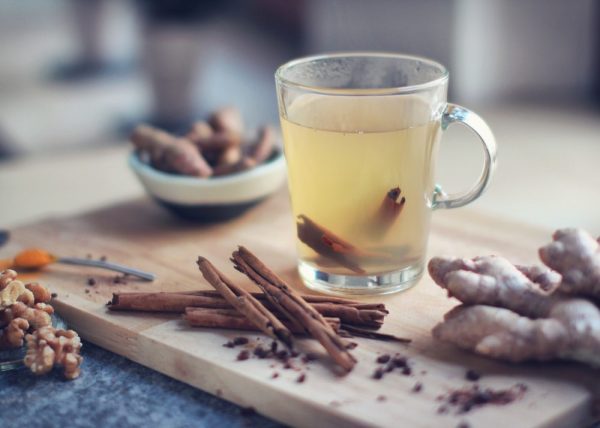With the health and wellness awareness rising, people have started questioning most conventional ways of doing things. Right from the foods to eat, supplements to consume, methods of cooking, and even the cookware to be used. With the non-stick pans plagued with controversies, the users now are being bombarded with various alternate options to choose from. But this is leaving them more confused.
Let’s solve this dilemma and decide for ourselves, based on evidence and research, which is the best cookware to use.
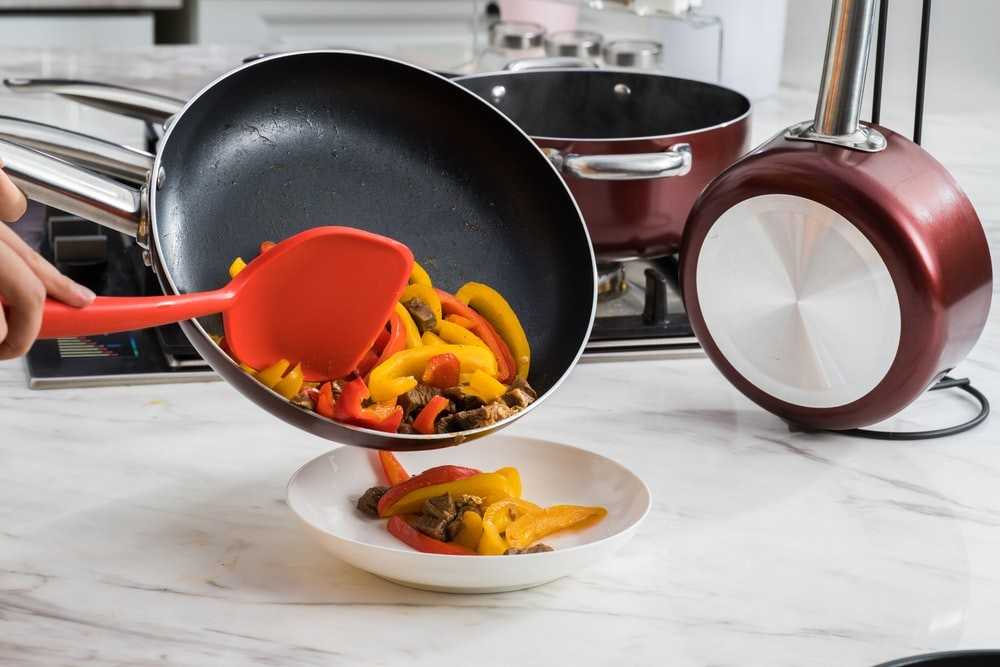
Before we chose the cookware, we need to keep the following points in mind:
- Cleaning: cleaning cookware is a big hassle, especially in Indian style of cooking, where due to high heat cooking, curries and other oily foods, stick to the cookware, and is not easy to remove. This depends from material to material. Chose a cookware, which is easy to clean, so that it remains bacteria free, or else it can make you sick.
- Durability: most households in the country simply cannot afford to change their cookware often. That’s why you need to choose durable cookware, which is easy to maintain and long lasting. It should have less wear and tear.
- Cost: modern cookware doesn’t come cheap. And not everyone family can afford to buy a high end one (neither does one needs to). Chose the best quality, long lasting cookware, which should also be pocket friendly.
- Health risks: we have already seen the health risks posed by non-stick cookware. But there are similar issues with other cookware too. This actually is the biggest point to be kept in mind.
- Whenever cooking in any metal cookware, use soft spoons made of wood or other material to stir the food being cooked. This helps avoid scratching of the metal surface, which prevents the risk of metal leeching into the food and also prevents wear & tear.
Here are the options being commonly available in the market, their pros & cons, and what you can chose:
- ALUMINIUM: this is an inexpensive , easy to maintain option. It cooks evenly and is very light weight.
But leaching of aluminum is common in such utensils. Aluminum is quite a toxic metal and is linked to various neurological disorders, like Alzheimer’s, Parkinson’s etc.
How we cook the food or store the food. Acidic foods such as fruit and vegetable juices, tomatoes and sauerkraut tend to increase in aluminium content more than other foods. But there is no evidence that aluminium which is leeched through cooking is actually harmful.
Acc. to a 2019 study, some studies suggest that cooking in utensils or aluminium foils is safe, others suggest that it may lead to toxic levels of aluminium in the body.
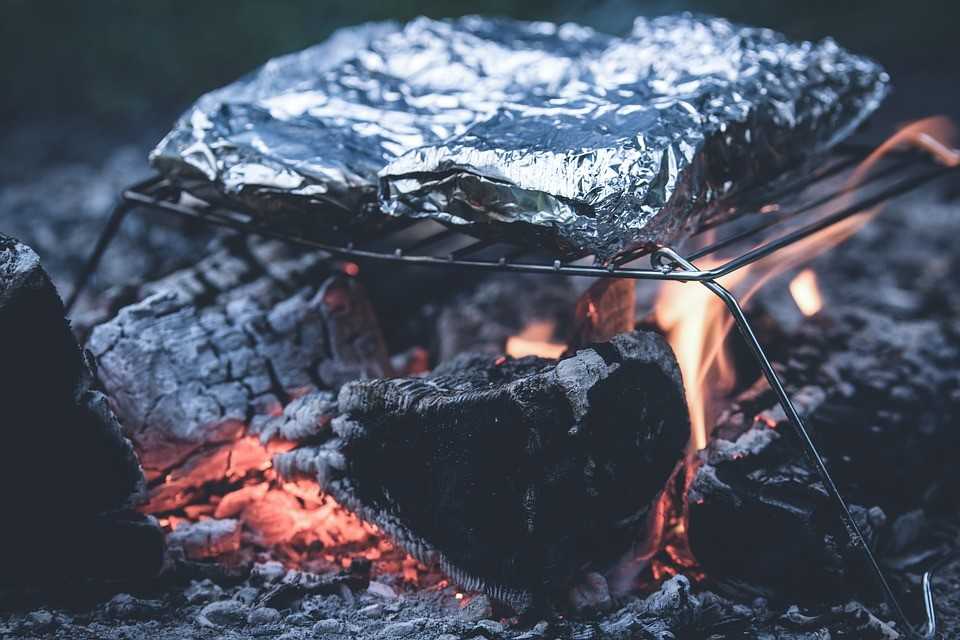
However, studies have shown that leaching of aluminium from cooking utensils depends on many factors such as pH, temperature and cooking medium. In healthy controls, 0.01%–1% of orally ingested aluminium is absorbed from the gastrointestinal tract and is eliminated by the kidney. Although the metal has a tendency to accumulate in tissues and may result in their dysfunction, the literature suggests that the apprehension is more apt in patients with chronic renal insufficiency. Its association with conditions such as mouth ulcer, AD, depression and anxiety is not scientifically well established. Researchers did not find any conclusive evidence of aluminium toxicity among the general population.
Some sources suggest to opt for anodized aluminium cookware. Anodized aluminium cookware is treated with an acidic solution that changes how the metal behaves. Anodized aluminium is easier to clean, can have “non-stick” qualities, and supposedly doesn’t cause leaching of aluminium into your food to the extent that regular aluminium does.
2. STAINLESS STEEL: is basically an alloy made of iron, nickel and chrome, and is called stainless because it is resistant to corrosion and rust.
It’s quite a cheap option to procure, and cooks the food easily. It is also quite easy to maintain. It is considered quite a controversy-free and safe option for cooking.
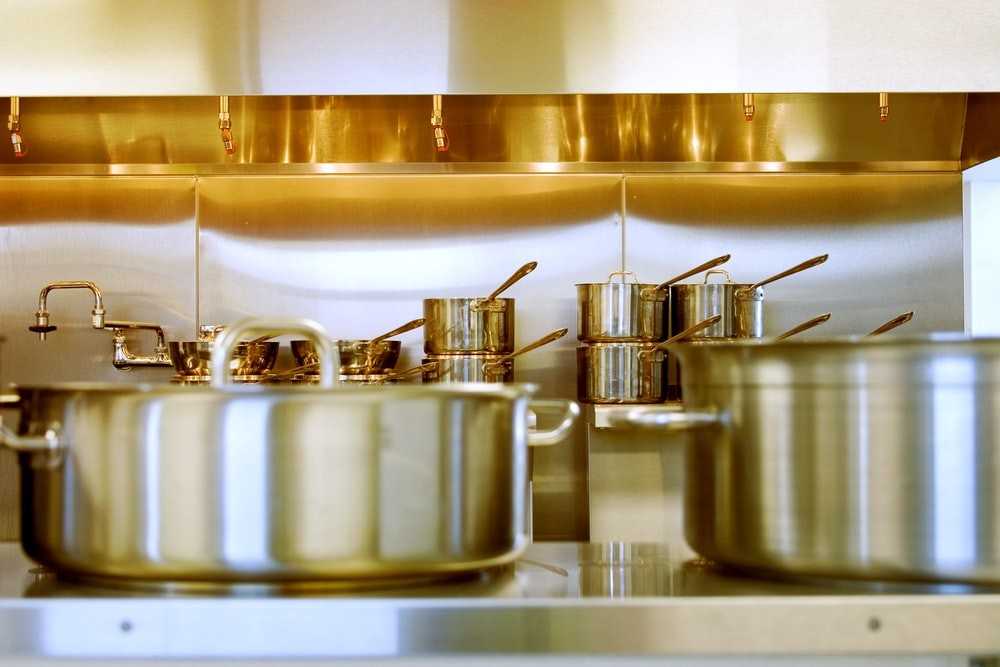
But a lot depends on the quality of stainless steel utensil. For e.g. a 2013 study, found that longer you cook in the stainless steel utensils, more the concentration of Nickel & Chromium increased in the food. After six hours of cooking, Ni and Cr concentrations in tomato sauce increased up to 26- and 7-fold respectively, depending on the grade of stainless steel.
3. CAST IRON: is basically an iron-carbon alloy, but is one of the best investments you can make for cooking food.
It’s not very cheap, but is very durable and strong. The heat distribution in food is quite even and is one of the most energy efficient metals to cook in. The best part in the use of these utensils, are the iron enriching properties of the food, when cooked in them.
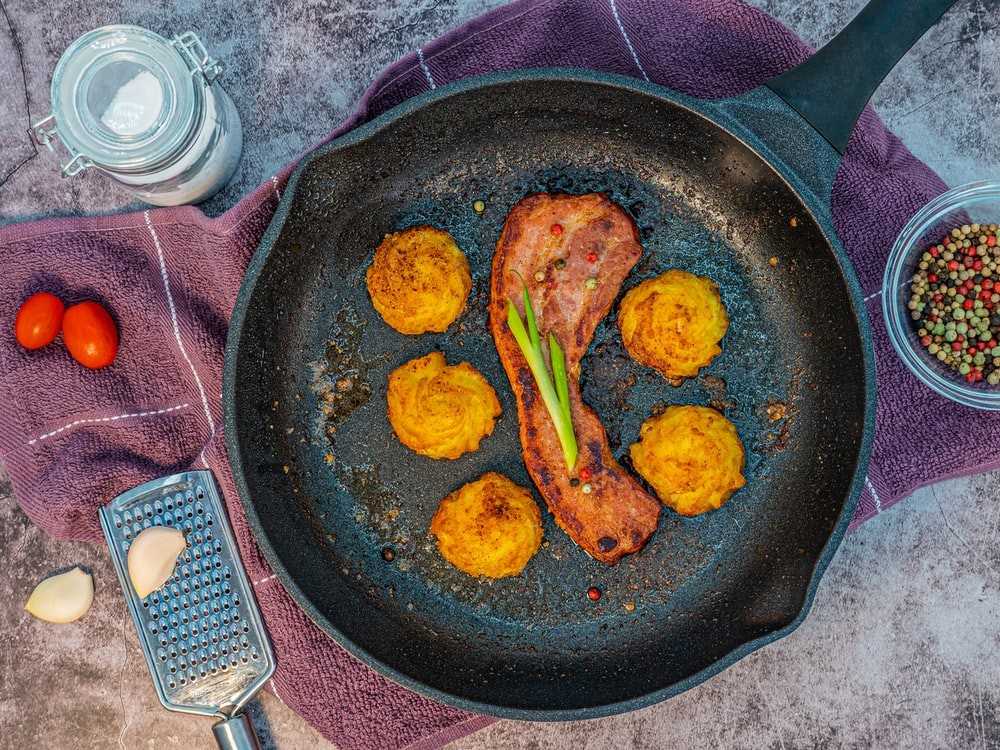
A 2003 systematic review study found that, eating food prepared in iron pots increases the haemoglobin concentration of anaemic/iron deficient individuals.
In a 2003 study, researchers studied a population comprised 164 participants eating from aluminium cooking pots and 158 from iron cooking pots. The mean haemoglobin change was significantly increased after 6 weeks in adults who consistently ate from an iron cooking pot.
A 2018 study, found that, food cooked in iron utensil takes more time as compare to non-iron utensil. Foods cooked in non-iron utensil were found to have less iron content in food as comparison to the food cooked in iron utensil.
A well-seasoned cast iron cookware which helps us to use less oil. The more often cooking is done, the more it becomes seasoned. The versatility and durability of iron cookware show signs of improvement with age.
In a 1999 study, researchers studied 407 Ethiopian children and found that, Ethiopian children fed food from iron pots had lower rates of anaemia and better growth than children whose food was cooked in aluminium pots. Provision of iron cooking pots for households in less-developed countries may be a useful method to prevent iron-deficiency anaemia.
There are very few studies, which didn’t find much difference in people suffering from Iron Deficiency Anaemia, with the use of iron cooking pots, due to the fact that iron leeched from the pots was not found to be bioavailable. This is because iron comes in a ferrous and a ferric form. Our bodies cannot assimilate the iron (ferric) from cast iron cookware. This means that iron from cast iron cookware is not bioavailable and it has no value to our bodies at the cellular level.
But then, there are other studies, which found that, though the iron added to foods cooked in iron pots is bioavailable, the amount obtained through this process is insufficient to replenish depleted iron stores during the first year of life. Which means that, for some people, cooking in iron pots would surely help, but may not be sufficient as the sole source of iron.
Also, there are some sources, which claim that cooking in iron utensils could lead to iron overload and toxicity. But there is not even a single evidence on this fact, that cooking in iron utensils has led to iron overload. This is also proven in all the studies which we saw above, and also the amount leeched is not that significant to lead to overload.
4. CERAMIC: is relatively new in the cookware market, but is quite a good and safe option. However, there are a few major issues.
First, ceramic cookware is not actually ceramic, but metal and coated with a non-stick material (often silicone oil/gel) that has a ceramic base. But they are not easy to maintain.
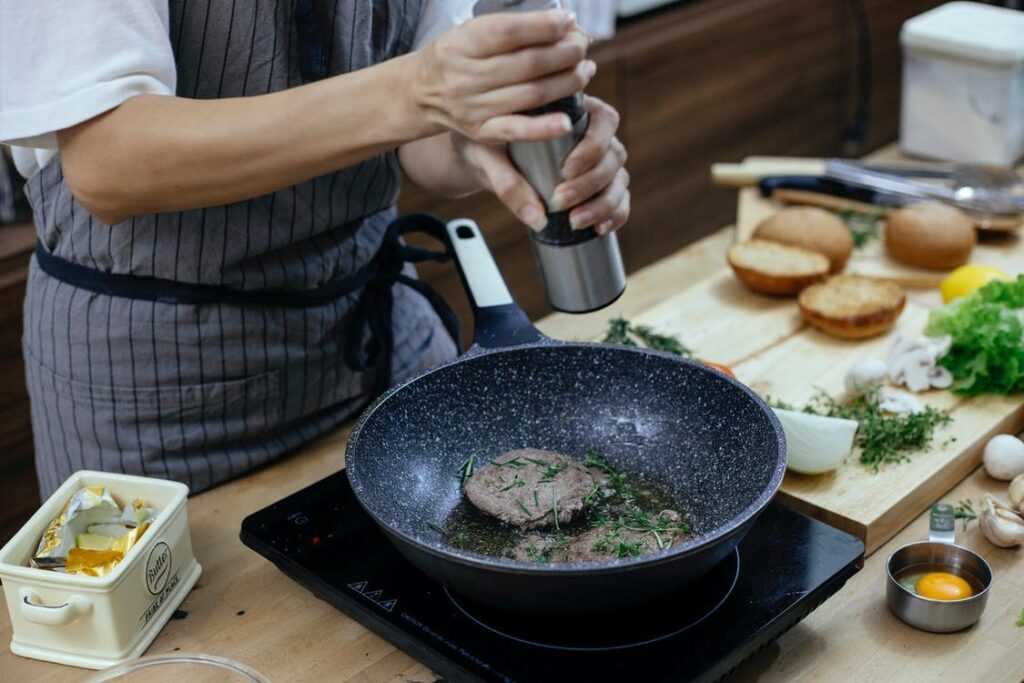
Here is a reason cited: “This silicone oil is released every time you cook, which provides a non-stick cooking surface and, at the beginning of its lifespan, may eliminate the need to use unhealthy cooking sprays, butter, or oil to prevent foods from sticking. (Note: As this silicone layer degrades, your ceramic cookware will lose its non-stick properties)”
Another common complaint with ceramic cooking is the uneven heat distribution.
Also, it is quite less durable as compared to other metal cookware, and prices quite high, as it is still not mass-produced as other cookware. But these problems can be done away with. For e.g. having an aluminium base would help in even cooking. Also, because its non-reactive, it’s a very safe option for cooking. But it is quite fragile and needs careful handling.
5. COPPER & BRASS: are two metals which have been highly recommended in Ayurveda and are the ancient metals, which were commonly used for cooking.
The best part about these utensils is that they are very good conductors of heat and lead to very even and efficient cooking, thus saving energy, and helps preserve the nutrients in food.
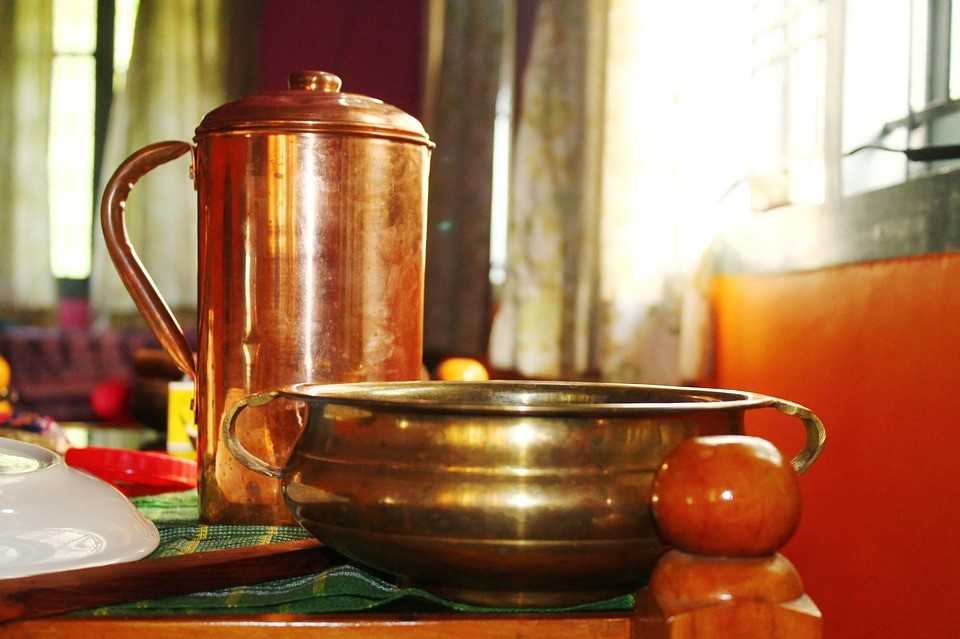
These metal cookware don’t come cheap today. They are quite strong, but a bit harder to maintain. In fact, the copper cookware today is often covered with other metals like Tin, steel or aluminium, because of which the material is no longer considered to be copper but co-laminated copper-steel or copper-aluminium. That’s why you should be opting for 100% copper or brass cookware.
Some sources claim that brass and copper react with certain foods and leech into the food at a faster rate. But there is simply no evidence of any copper/brass toxicity from cooking in these utensils.
Adults need approximately 900 micrograms of copper per day, according to the Dietary Reference Intakes (DRIs) established by the National Academy of Sciences. The Tolerable Upper Limit (UL) for copper is about 10 times that amount, at 10,000 micrograms (the same as 10 milligrams). So it is unlikely that you would get that amount of copper into your food, from the cooking vessel.
6. CLAY/EARTHENWARE: these, along with other metal cookware like copper/brass, have been used since ancient times, and are still being used extensively in rural areas.
The main issue is the quality of such cookware, as not many companies are manufacturing such utensils in mass scale. Also, it is the least durable and once broken, the only way out is replacement. So it needs careful handling. On the other hand, it takes the longest time to cook in them, but that’s also a positive point as slow cooking retains nutrition and moisture.
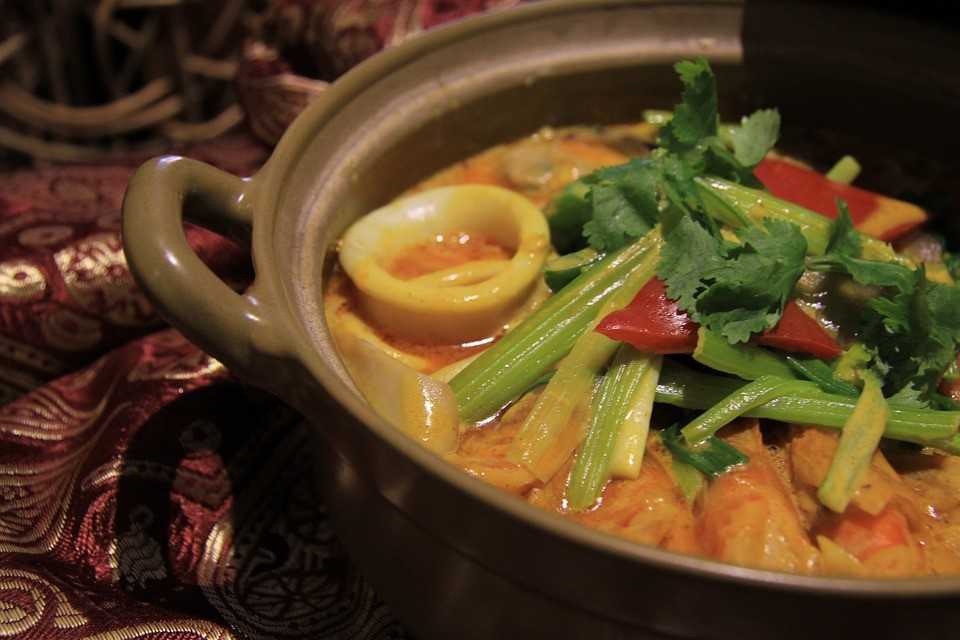
Market is suddenly full of such utensils, but remember to buy the non-shining ones, as the shining layer coated on these utensils can be toxic. These clay pots are ideal for cooking dishes that require cooking over a low heat without temperature changes and for foods that need to be heated up gradually and evenly, such as pulses, rice, vegetable soups and meat stews.


